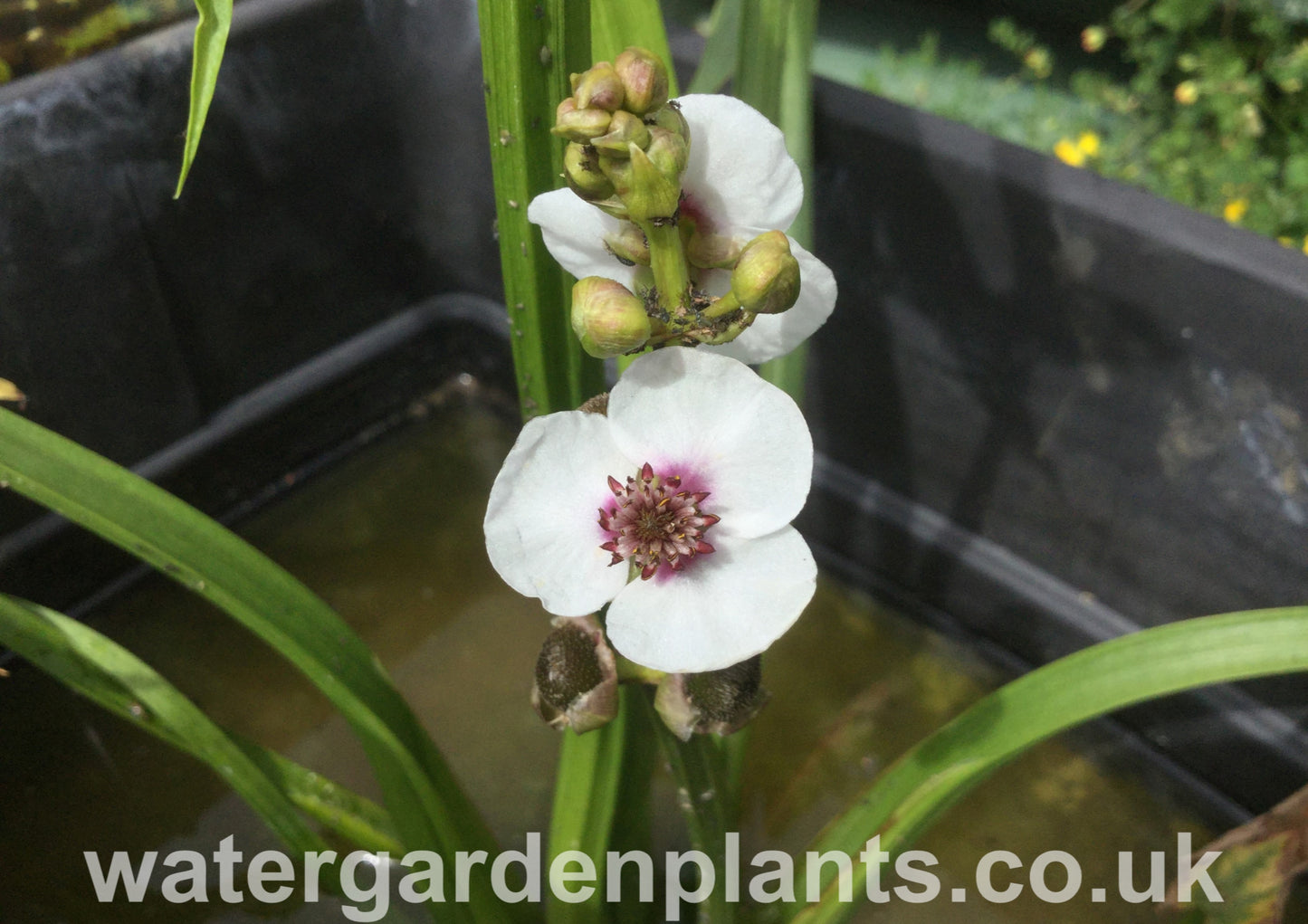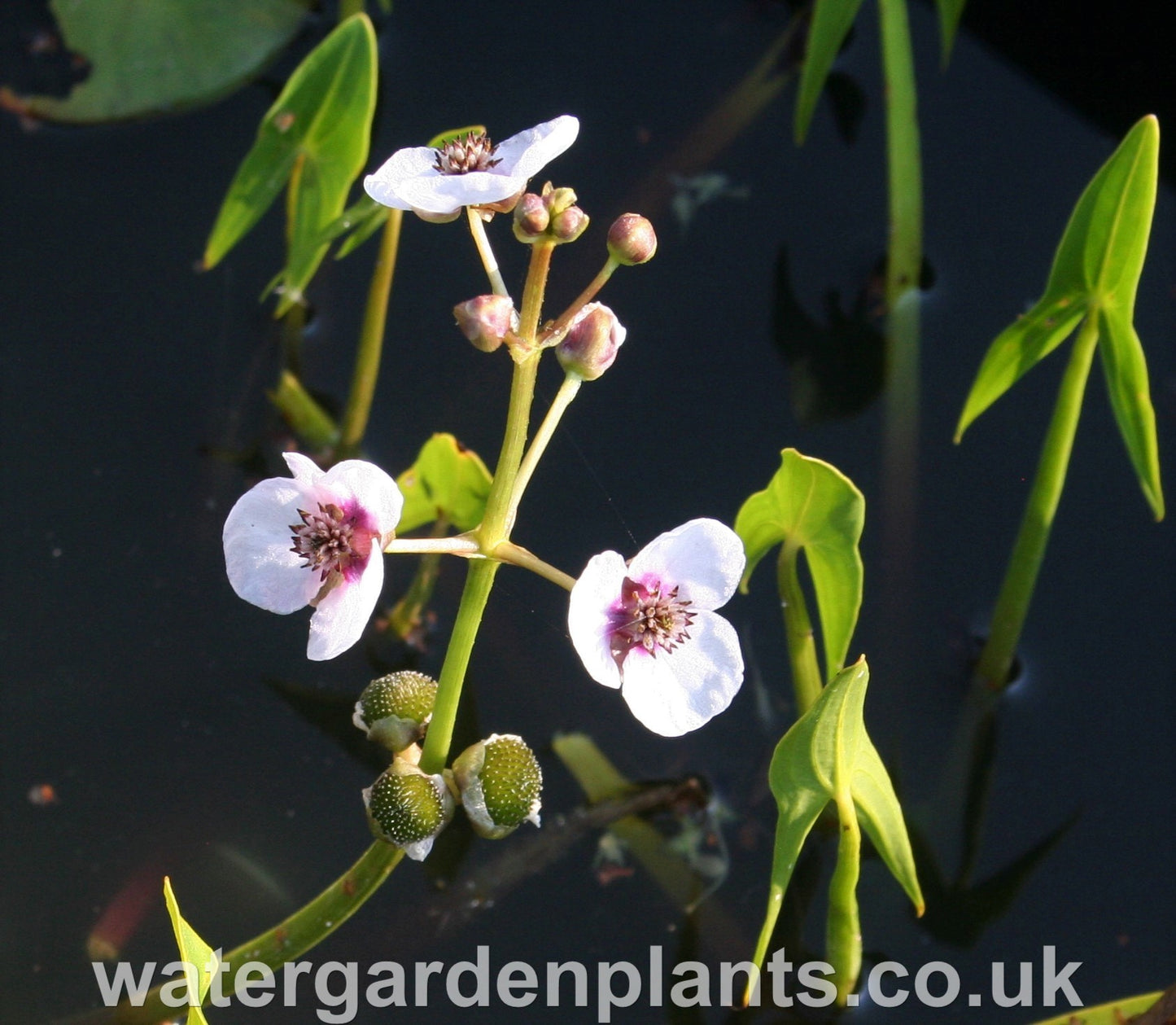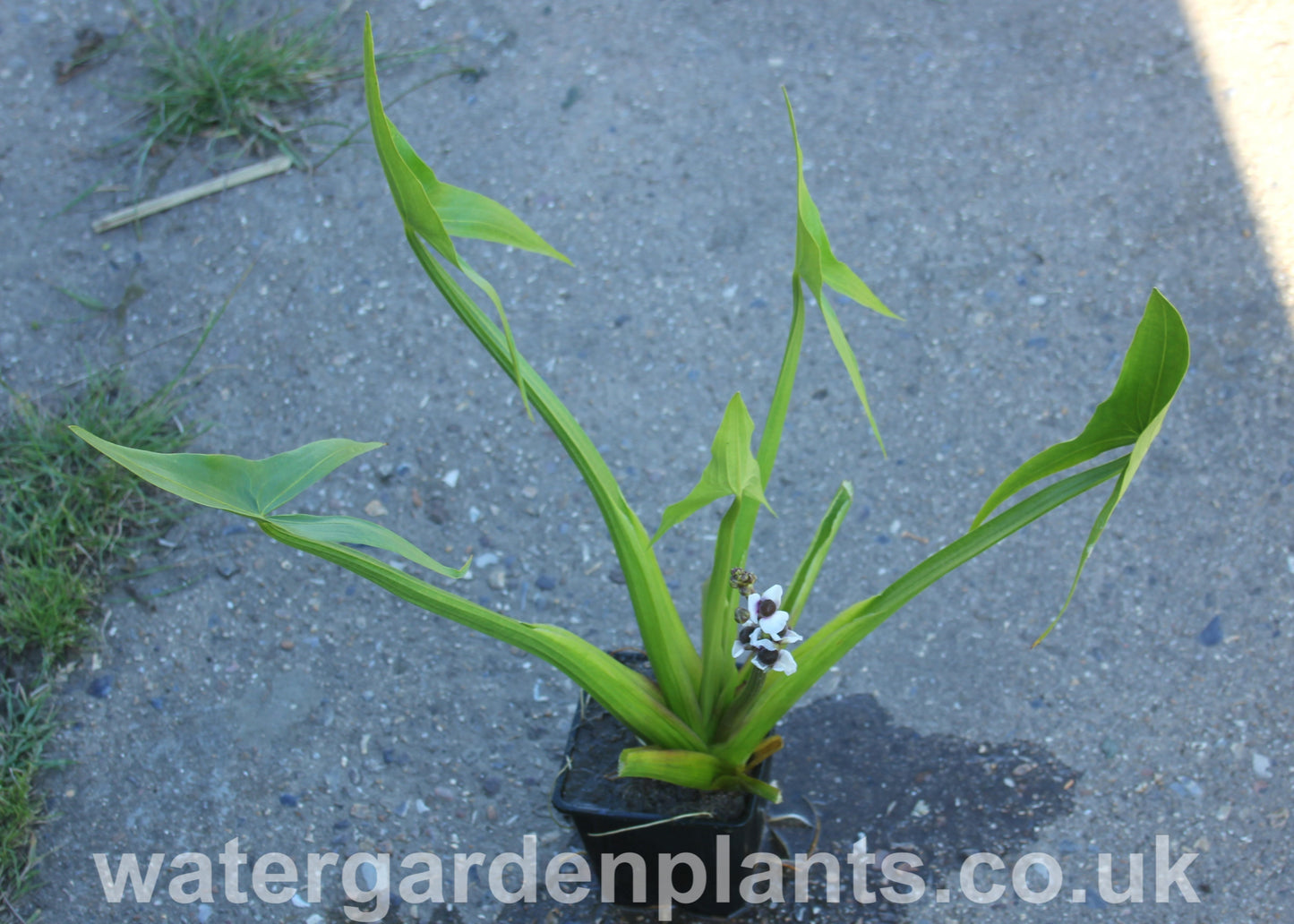


- Approximate height: 45 - 75cm (18 - 30 inches)
- Recommended water depth over crown of the plant: 5 - 20cm (2 - 8 inches)
- Flowering time: Late June to July
- Flower colour: White
- Supplied either as loose tubers or in a solid 1 litre pot - for best results we recommend potting on using a 2 litre pot
Sagittaria sagittifolia is an impressive native British plant, with characteristic bright-green, arrow-shaped leaves, and white flowers with a dark pinkish centre in summer. It grows each year from a small underground tuber (the 'potato'), appearing above the soil as a green spike in May, and then growing fast, to flower in July. After flowering, the plant dies back. Underground, each plant is making two to three tubers for the following year. (Sometimes these will escape from the pot, coming up next spring somewhere else in the pond, but in our experience this isn't common). It will overwinter as these small round tubers, with a growing spike, but without leaves or roots, from autumn until the following spring (see picture).
It is an easy plant to grow and has a striking, statuesque, appearance. Its only drawback is that the outer leaves, knowing they have done their job, begin to yellow slightly even as the flower is out. Once the flower is done, the leaves give up completely and the plant goes over, not giving any more show until late spring the following year.
Because the plant over-winters as a tuber and comes up again each spring, it is not usually available in pots early in the year. It can either be purchased as loose tubers early in the year, or bought in pots later in the year (generally from June onwards). If you do buy loose tubers, plant them in the place of your choice with the growing spike pointing upwards and about an inch of soil over its top.
If designing a planting scheme, we recommend approximately 3 Sagittaria sagittifolia plants per square foot of ground, or 1 - 2 plants per linear foot of pond edge. Read more here on how to pot and care for your plant.



